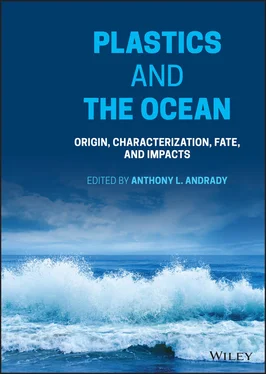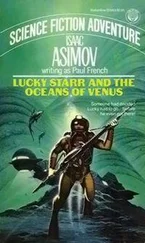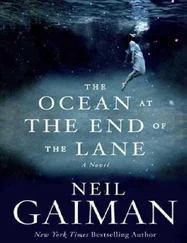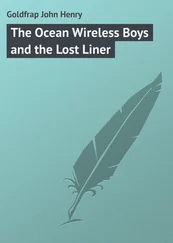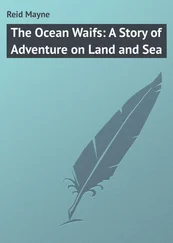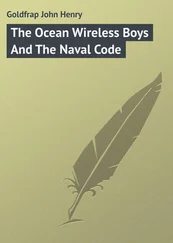Plastics and the Ocean
Здесь есть возможность читать онлайн «Plastics and the Ocean» — ознакомительный отрывок электронной книги совершенно бесплатно, а после прочтения отрывка купить полную версию. В некоторых случаях можно слушать аудио, скачать через торрент в формате fb2 и присутствует краткое содержание. Жанр: unrecognised, на английском языке. Описание произведения, (предисловие) а так же отзывы посетителей доступны на портале библиотеки ЛибКат.
- Название:Plastics and the Ocean
- Автор:
- Жанр:
- Год:неизвестен
- ISBN:нет данных
- Рейтинг книги:5 / 5. Голосов: 1
-
Избранное:Добавить в избранное
- Отзывы:
-
Ваша оценка:
- 100
- 1
- 2
- 3
- 4
- 5
Plastics and the Ocean: краткое содержание, описание и аннотация
Предлагаем к чтению аннотацию, описание, краткое содержание или предисловие (зависит от того, что написал сам автор книги «Plastics and the Ocean»). Если вы не нашли необходимую информацию о книге — напишите в комментариях, мы постараемся отыскать её.
Plastics and the Ocean
Plastics and the Ocean
Plastics and the Ocean — читать онлайн ознакомительный отрывок
Ниже представлен текст книги, разбитый по страницам. Система сохранения места последней прочитанной страницы, позволяет с удобством читать онлайн бесплатно книгу «Plastics and the Ocean», без необходимости каждый раз заново искать на чём Вы остановились. Поставьте закладку, и сможете в любой момент перейти на страницу, на которой закончили чтение.
Интервал:
Закладка:
Anthony L. Andrady
Apex, NC 27523
Foreword
Charles James Moore
Moore Institute for Plastic Pollution Research, 160 N. Marina Drive, Long Beach, CA, USA
As I began writing this Foreword in the waning days of 2020, the media was replete with reviews of the year soon to be thankfully gone. Besides 2020 being one long battle against COVID‐19, the narrator of the Columbia Broadcasting System’s (CBS) year in review made the following statement: “2020 was the year the plastic pollution problem got the world’s attention.” Apparently, the problem was baking in the world oven for a good half‐century and finally came out in a form that caught “the world’s attention.” For those of us working for decades to draw back the plastic curtain of ignorance that has kept the public from a general understanding of the material that characterizes the modern era, this was a belated yet welcome assertion.
The study of marine plastics arose before plastics were acknowledged to be problematic for the ocean. At first, marine scientists were simply noting that plastics had been found in birds and on the sea surface and were unsure of what this meant. The problematic nature of synthetic polymers in our water world could have been inferred from the fact there is no background or natural level of these persistent anthropogenic compounds anywhere. This makes them a priori a pollutant; they do not belong in or to any natural system. Small amounts of synthetic polymers in the environment might have been ignored by science, but the quantities rapidly increased and became impossible to ignore. Sadly, it is because of plastic pollution that we study ocean plastics. In this volume, an esteemed publisher of scientific literature and a world‐renowned expert on environmental plastics have teamed up to give you widely varied perspectives that together demonstrate clearly that marine plastic pollution its own field of science. If science can be characterized as a branch of knowledge that provides answers by carefully studying a phenomenon from as many areas of expertise as possible, then the study of plastic pollution of the marine environment has surely become its own field of scientific inquiry. For a deep and broad understanding of the issues surrounding ocean plastics, Wiley could not have found a better editor for this volume than Dr. Anthony Andrady. His 2003 volume Plastics and the Environment , was the most comprehensive treatment of the subject ever written with contributions from twenty‐two authors.
No scientists are exempt from the world views known as paradigms that reign in their historical milieu. Scientists are slow to acknowledge the need for a completely new field of research, and academic institutions and their funders are slow to divert resources to a new scientific discipline, so it has taken over half a century to create awareness and a consensus so that institutions can seek and give funding that opens wide the doors to plastic pollution research. The production of 1000’s of peer‐reviewed studies and several textbooks over the last quarter‐century is strong evidence that plastics and the ocean are now linked in a novel, though highly undesirable marriage for the foreseeable future; an unhappy union whose dissolution will be messy and unknowably prolonged. A world polluted by plastic is indeed a new world, and its discovery and elucidation could be described as a scientific revolution.
Thomas Kuhn stated in The Structure of Scientific Revolutions , “Though the world does not change with a change of paradigm, the scientist afterward works in a different world…” May we not take exception to this dictum in the case of plastic pollution? The world has changed, since its water, air and soil, as well as the space around it, are infected with synthetic polymers never before seen in its long history. The contemporary scientific paradigm is an anthropogenic one, and the modern scientist works in a world, in many ways, made by humans.
The field of marine plastic research may conveniently be divided into three chronological phases:
1 The Discovery Phase, 1960–1999, when the phenomenon of ocean plastic was first reported and confirmed.
2 The Consolidation Phase, 2000–2014, when ocean plastic research produced considerable quan‐ titative data and highlighted areas of concern, mainly entanglement and ingestion. Other areas considered collateral were aesthetics, increasing international production of plastic consumer goods leading to increasing ocean plastics, biofouling, three‐dimensional movement in the water column, transport of exotics and effects on the health of marine species.
3 The Rapid Growth Phase, 2015‐present, when large institutions and governmental organizations began to see ocean plastics as worthy of high‐level research and remedial action, and nongovernmental organizations focusing on plastic pollution worldwide.
The dawn of the Age of Plastic can be traced to its increased development and use in WWII. During the Pax Americana that followed, synthetic polymers spread rapidly from wartime to peacetime consumer and industrial applications. The famous LIFE Magazine article entitled “Throwaway Living,” made single‐use foodservice “modern” in 1955, but never addressed the after‐ life of the items thrown away. Away was far, not near. After three decades of this growing single‐use lifestyle, the public became aware of problems with finding a faraway place for waste. This was highlighted by the long but circular voyage of the barge Mobro 4000 from New York to Belize and back, when despite repeated attempts, no U. S. state, territory, or foreign country would accept 3000 tons of New York’s garbage. Upon the barge’s return to New York, symbolizing a very expensive and failed attempt to find “away,” the refuse was burned and the ash buried in a landfill. To this day, many forms of burning and burying continue to dominate plastic disposal, both of which are polluting “solutions” that waste the energy and resources used to make the original products.
The question of what happens to trash in a landfill was explored in the 1970s by William Rathje, a professor of anthropology at the University of Arizona. He found that when buried deep in a landfill, common biodegradable items, such as carrots, hot dogs, and newspapers did not biode‐ grade. A similar result for the ocean was observed after the sinking of the deep submergence vehicle Alvin, operated by Woods Hole Oceanographic Institution. Carl Wirsen and Holger Jannasch recovered the soup, sandwich, and apple lunch that sank to a depth of 1500 meters when Alvin’s lowering cable broke during surface launching. After 11 months of inoculation with seawater, “The apples were in a condition equal to that of conventional careful storage, and the bread, may onnaise, ham, and bouillon appeared to fare considerably better than they would have under normal conditions of refrigeration.” Jannasch and Wirsen conducted subsequent experiments, using specially designed vessels lowered to great depths with biodegradable materials inside and then inoculated with seawater. They concluded that, “if the true removal of pollutants is intended, then the slow rates of microbial degradation argue clearly against deep ocean disposal.” (Oceanus)
Seventeen years after the end of World War II, Steve Rothstein was studying seabirds and found certain petrel species (collected in 1962) had eaten plastic. As he told an interviewer compiling the early history of plastic pollution: “I didn’t quite realize the significance of things. I figured, well, there’s probably, maybe some plastic out there in the ocean and the birds are swallowing it. And I assumed that maybe everyone knows this, or it’s not that worth reporting that much” (Plastisphere). As it turned out, it was indeed “worth reporting,” but it would take two decades of such reports, mostly in journals and reviews characterized by Peter Ryan in “A Brief History of Marine Litter Research” as “not such good places,” before the First International Marine Debris Conference was convened by the Southwest Fisheries Science Center in Honolulu in 1984.
Читать дальшеИнтервал:
Закладка:
Похожие книги на «Plastics and the Ocean»
Представляем Вашему вниманию похожие книги на «Plastics and the Ocean» списком для выбора. Мы отобрали схожую по названию и смыслу литературу в надежде предоставить читателям больше вариантов отыскать новые, интересные, ещё непрочитанные произведения.
Обсуждение, отзывы о книге «Plastics and the Ocean» и просто собственные мнения читателей. Оставьте ваши комментарии, напишите, что Вы думаете о произведении, его смысле или главных героях. Укажите что конкретно понравилось, а что нет, и почему Вы так считаете.
